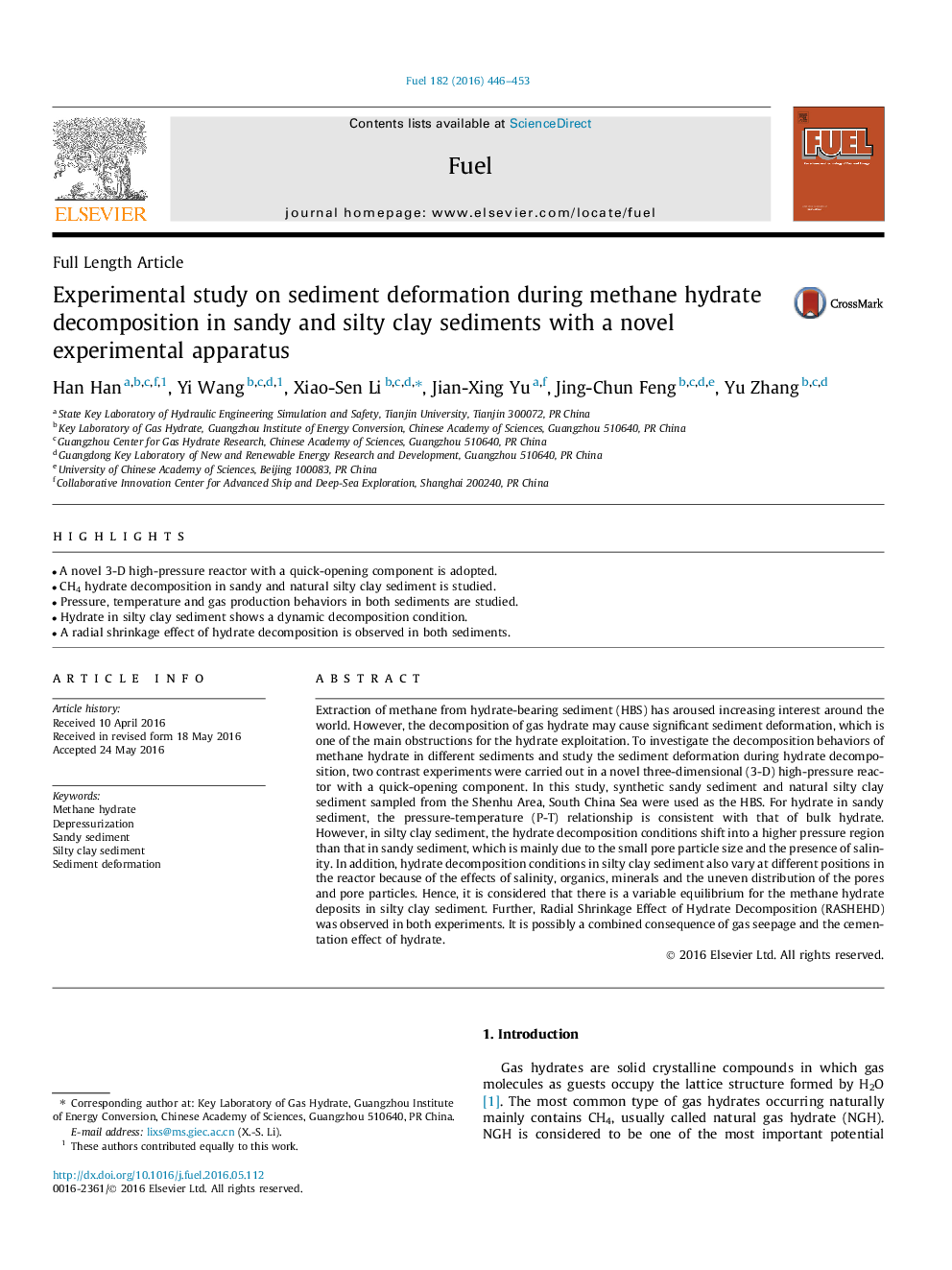| Article ID | Journal | Published Year | Pages | File Type |
|---|---|---|---|---|
| 6633477 | Fuel | 2016 | 8 Pages |
Abstract
Extraction of methane from hydrate-bearing sediment (HBS) has aroused increasing interest around the world. However, the decomposition of gas hydrate may cause significant sediment deformation, which is one of the main obstructions for the hydrate exploitation. To investigate the decomposition behaviors of methane hydrate in different sediments and study the sediment deformation during hydrate decomposition, two contrast experiments were carried out in a novel three-dimensional (3-D) high-pressure reactor with a quick-opening component. In this study, synthetic sandy sediment and natural silty clay sediment sampled from the Shenhu Area, South China Sea were used as the HBS. For hydrate in sandy sediment, the pressure-temperature (P-T) relationship is consistent with that of bulk hydrate. However, in silty clay sediment, the hydrate decomposition conditions shift into a higher pressure region than that in sandy sediment, which is mainly due to the small pore particle size and the presence of salinity. In addition, hydrate decomposition conditions in silty clay sediment also vary at different positions in the reactor because of the effects of salinity, organics, minerals and the uneven distribution of the pores and pore particles. Hence, it is considered that there is a variable equilibrium for the methane hydrate deposits in silty clay sediment. Further, Radial Shrinkage Effect of Hydrate Decomposition (RASHEHD) was observed in both experiments. It is possibly a combined consequence of gas seepage and the cementation effect of hydrate.
Related Topics
Physical Sciences and Engineering
Chemical Engineering
Chemical Engineering (General)
Authors
Han Han, Yi Wang, Xiao-Sen Li, Jian-Xing Yu, Jing-Chun Feng, Yu Zhang,
